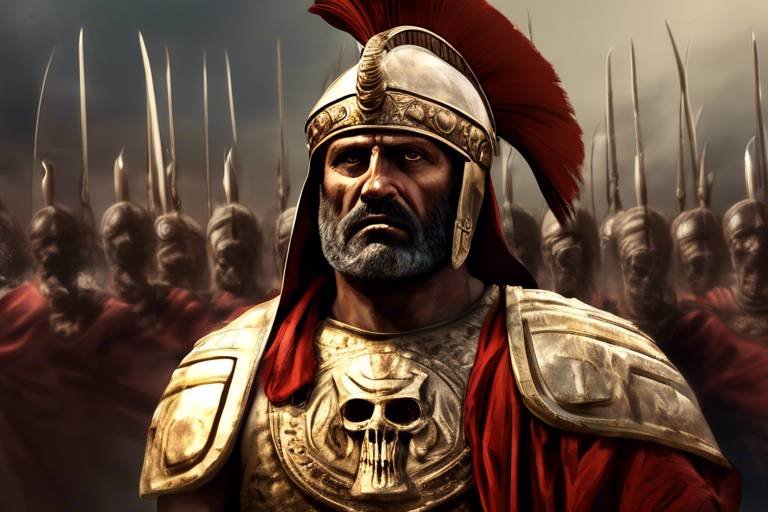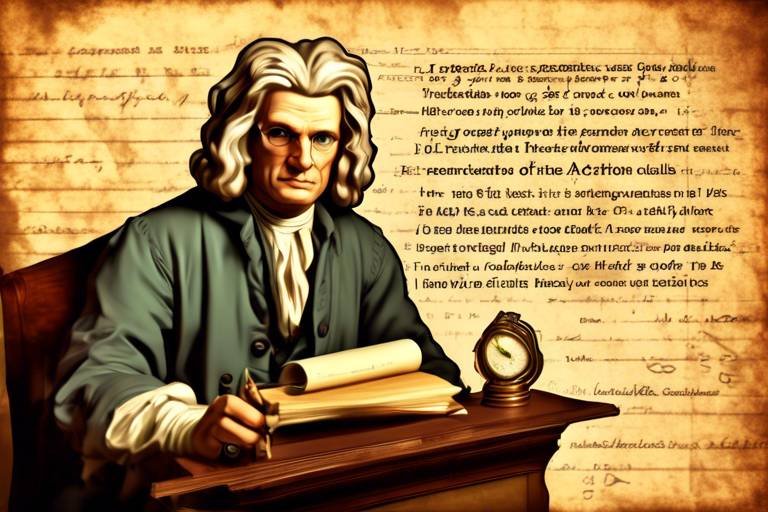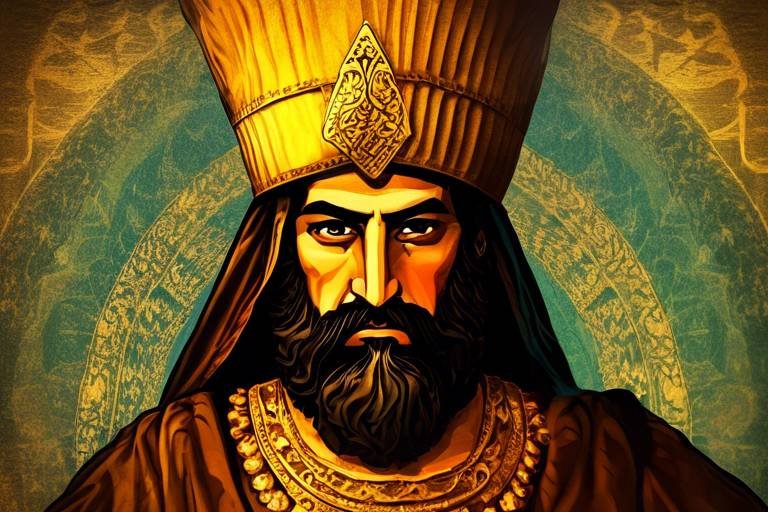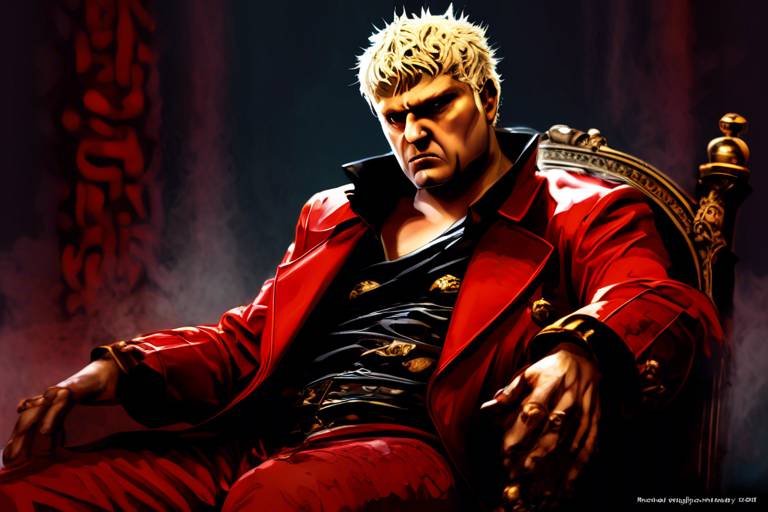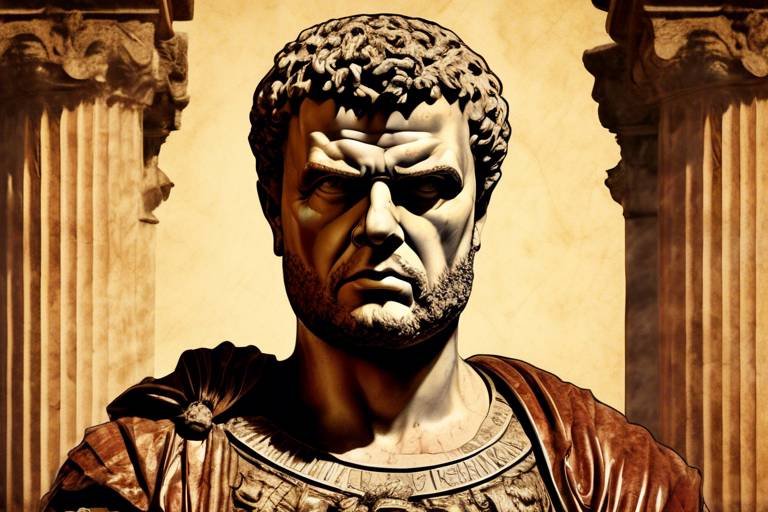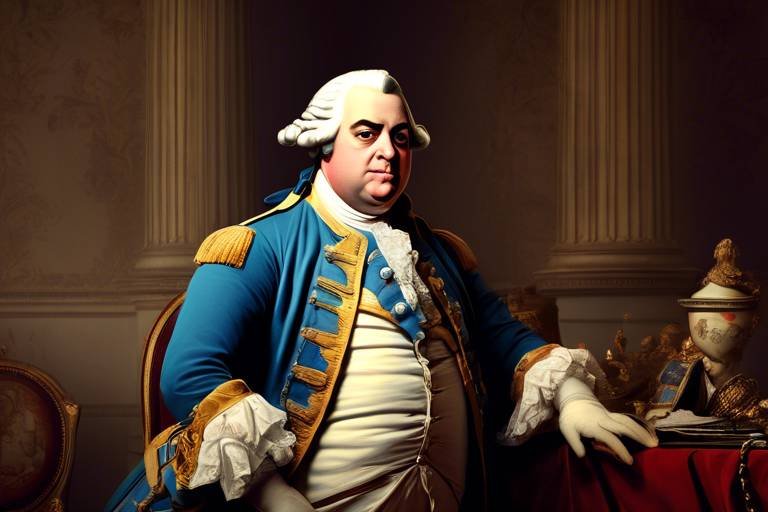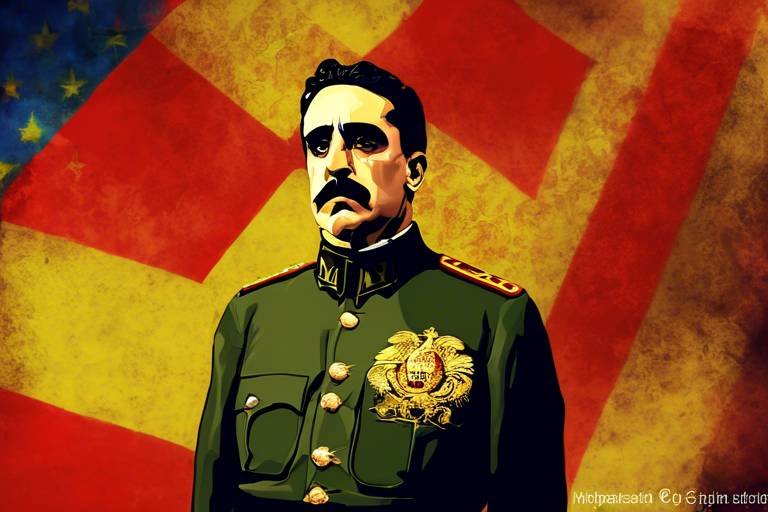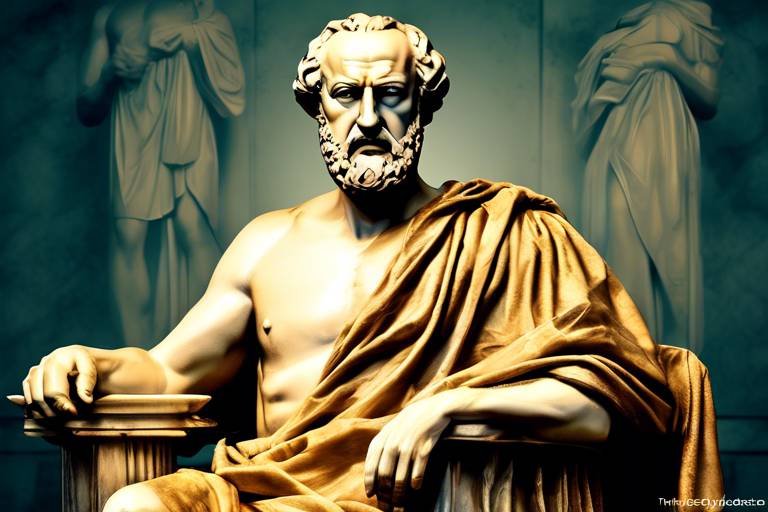Ferdinand II: The Holy Roman Emperor
Ferdinand II, known as the Holy Roman Emperor, was a prominent figure in European history during the tumultuous period of the Thirty Years' War. His reign was characterized by religious conflicts, military campaigns, and efforts to consolidate power within the Holy Roman Empire. Ferdinand II's actions and policies had a lasting impact on the political and religious landscape of Europe, shaping the course of history for years to come.

Early Life and Ascension to the Throne
Ferdinand II, born on July 9, 1578, in Graz, Austria, was the eldest son of Archduke Charles II of Inner Austria. His upbringing was marked by a strong Catholic influence, instilling in him a deep sense of religious devotion from an early age. Ferdinand received a comprehensive education, focusing on theology, philosophy, and military strategy, preparing him for a future leadership role within the Habsburg dynasty.
Upon the death of his cousin, Emperor Matthias, in 1619, Ferdinand II ascended to the throne of the Holy Roman Empire. His succession was not without challenges, as he faced opposition from Protestant nobles who questioned his Catholic faith and feared his intentions to impose Catholicism throughout the Empire. Despite these obstacles, Ferdinand's determination and political acumen enabled him to secure his position as the Holy Roman Emperor.
As he assumed the reins of power, Ferdinand II embarked on a mission to strengthen the authority of the Habsburg monarchy and restore Catholicism as the dominant faith in the Empire. His coronation in Frankfurt in 1619 marked the beginning of a tumultuous period in European history, characterized by religious conflict and political upheaval.

Religious Conflict and the Thirty Years' War
Religious Conflict and the Thirty Years' War were defining aspects of Ferdinand II's reign as the Holy Roman Emperor. The religious landscape in the Holy Roman Empire was fraught with tensions between Catholics and Protestants, with each side vying for dominance and religious supremacy. Ferdinand II, a devout Catholic, was fervently committed to upholding the Catholic faith and sought to combat the spread of Protestantism within his territories.
As the Thirty Years' War erupted, Ferdinand II emerged as a central figure in the conflict, leveraging his position as the Holy Roman Emperor to champion the Catholic cause. His zeal for Catholicism and his unwavering commitment to the faith fueled the flames of war, leading to widespread devastation and loss of life across Europe. The war, which began as a religious struggle, soon evolved into a complex political and military conflict that reshaped the map of Europe.
Under Ferdinand II's leadership, Catholic forces clashed with Protestant armies in a series of bloody battles that ravaged the lands of the Holy Roman Empire. The conflict was marked by brutal sieges, fierce engagements, and widespread atrocities committed by both sides. Ferdinand II's determination to uphold Catholicism as the dominant religion in his realm fueled the intensity of the war, prolonging the suffering of the people caught in the crossfire.
Despite facing significant opposition from Protestant princes and foreign powers, Ferdinand II remained steadfast in his commitment to the Catholic cause. His alliances with Catholic states and his military strategies aimed at suppressing Protestant resistance demonstrated his resolve to maintain Catholic hegemony in the Empire. The Thirty Years' War, with Ferdinand II at its helm, became a crucible of religious conflict and political intrigue that reverberated throughout Europe.

Consolidation of Power and Policies
During his reign, Ferdinand II focused on consolidating power within the Holy Roman Empire and implementing policies to strengthen the authority of the Habsburg dynasty. One of his key efforts was to centralize authority by reducing the autonomy of individual states and territories under the Empire. He sought to establish a more unified and centralized governance structure to enhance imperial control and stability.
To achieve this goal, Ferdinand II implemented administrative reforms that aimed to streamline the bureaucracy and increase efficiency in governance. He established new administrative offices and appointed loyal officials to key positions to ensure the effective implementation of his policies. These reforms were intended to strengthen the imperial administration and enhance the Habsburg rule over the diverse territories of the Empire.
In addition to centralization efforts, Ferdinand II pursued policies to promote Catholicism and combat the spread of Protestantism within the Empire. He supported the Catholic Counter-Reformation, a movement aimed at reviving and strengthening the Catholic Church in response to the Protestant Reformation. Ferdinand II's support for the Counter-Reformation reflected his commitment to upholding Catholic orthodoxy and preserving the influence of the Catholic Church.
Furthermore, Ferdinand II sought to assert Habsburg dominance in the political and religious landscape of Europe. He formed alliances with other Catholic powers, such as Spain and the Papal States, to bolster his position and counter the influence of Protestant states. These alliances played a crucial role in shaping the military strategies employed by Ferdinand II during the Thirty Years' War, as he sought to defend Catholic interests and maintain Habsburg supremacy.

Defenestration of Prague and Bohemian Revolt
The Defenestration of Prague in 1618 was a pivotal event that sparked the Bohemian Revolt and set off a chain of events leading to the Thirty Years' War. The term "defenestration" refers to the act of throwing someone out of a window, and in this case, it symbolized the Bohemian Protestants' defiance against the Catholic Habsburg rulers.
The incident took place at Prague Castle when a group of Bohemian nobles protested against the Catholic policies of Ferdinand II, who had recently been elected as the Holy Roman Emperor. In response to their grievances, the nobles threw two of the Emperor's representatives out of a window, an act that was seen as a direct challenge to Habsburg authority.
The Defenestration of Prague marked the beginning of the Bohemian Revolt, as the Bohemian estates declared their independence from the Habsburgs and elected Frederick V of the Palatinate as their new king. This defiance against Ferdinand II's rule set off a series of conflicts that would engulf the Holy Roman Empire in the Thirty Years' War.
Ferdinand II, determined to assert his authority and uphold Catholicism, responded to the Bohemian Revolt by raising an army and initiating military campaigns to suppress the Protestant uprising. The conflict that began with the Defenestration of Prague would evolve into a larger religious and political struggle that reshaped the map of Europe and left a lasting impact on the continent.

Imperial Election and Coronation
After the death of Emperor Matthias, Ferdinand II faced the daunting task of securing his position as the new Holy Roman Emperor. The Imperial election process was a complex and intricate affair, involving the votes of the Electors who held significant power in determining the Emperor. Ferdinand II's election in 1619 was not without challenges, as rival factions vied for influence and sought to advance their own agendas. Despite the political maneuvering and tensions, Ferdinand II emerged victorious and was crowned as the Holy Roman Emperor.
The coronation ceremonies were grand and symbolic, showcasing the pomp and majesty of imperial power. Ferdinand II's coronation marked the formal beginning of his reign, signifying his authority over the vast lands and territories of the Holy Roman Empire. The elaborate rituals and traditions associated with the coronation emphasized the continuity of imperial rule and the sacred nature of the Emperor's role as the defender of the Catholic faith.
However, the challenges did not end with the coronation. Ferdinand II faced resistance and opposition from various quarters, including Protestant princes and nobles who questioned his legitimacy and authority. The diverse nature of the Empire meant that asserting control over all regions was a constant struggle, requiring diplomatic finesse and military strength.
As Ferdinand II navigated the complexities of imperial governance, he sought to consolidate his power and uphold the principles of Catholicism. His policies and decisions during his reign would have far-reaching consequences for the religious landscape of Europe and the future of the Holy Roman Empire.

Warfare and Military Strategies
Warfare and Military Strategies during Ferdinand II's reign were characterized by intense conflict and strategic maneuvering. As a key figure in the Thirty Years' War, Ferdinand II employed various military tactics to advance his goals and uphold Catholic supremacy in the Holy Roman Empire. His alliances with Catholic powers such as Spain and the Papal States bolstered his military strength and allowed him to wage war against Protestant forces.
One of Ferdinand II's notable military strategies was the use of combined arms tactics, integrating infantry, cavalry, and artillery units to achieve tactical superiority on the battlefield. This approach enabled his forces to adapt to different combat scenarios and effectively engage enemy troops. Additionally, Ferdinand II's emphasis on discipline and training within his army contributed to its overall effectiveness in combat.
Furthermore, Ferdinand II's military campaigns were marked by sieges, battles, and strategic maneuvers aimed at expanding Habsburg influence and suppressing Protestant resistance. His decisive victories, such as the Battle of White Mountain in 1620, solidified his position as a formidable military leader and furthered his ambitions to restore Catholic authority in the Empire.
Despite facing challenges such as logistical constraints and internal dissent within the Habsburg territories, Ferdinand II's military prowess and determination to uphold Catholicism propelled his forces forward in the protracted conflict of the Thirty Years' War. His ability to adapt to changing circumstances on the battlefield and leverage strategic alliances underscored his strategic acumen and resilience in the face of adversity.

Edict of Restitution and Counter-Reformation
During his reign, Ferdinand II issued the Edict of Restitution, a decree that aimed to restore Catholic lands and properties confiscated by Protestant rulers. This edict had far-reaching consequences, sparking tensions and conflicts across the Holy Roman Empire. The Counter-Reformation, a movement to revive and strengthen Catholicism in response to the Protestant Reformation, was strongly supported by Ferdinand II. He sought to reassert Catholic authority and promote religious unity within his territories through various measures.

Legacy and Historical Assessment
Ferdinand II, the Holy Roman Emperor, left a lasting legacy in European history that continues to be a subject of historical assessment and debate. His reign was marked by religious conflicts, military campaigns, and efforts to centralize power within the Holy Roman Empire. Despite controversies surrounding his policies and actions, Ferdinand II's impact on the Empire and European politics cannot be understated.
One of the key aspects of Ferdinand II's legacy is his role in the Thirty Years' War, a devastating conflict that reshaped the political and religious landscape of Europe. As a staunch Catholic ruler, Ferdinand II's zeal for the Catholic faith fueled the war against Protestant forces, leading to widespread destruction and loss of life across the continent.
Furthermore, Ferdinand II's Edict of Restitution, aimed at restoring Catholic lands and properties confiscated by Protestants, sparked further tensions within the Empire. While seen as a move to strengthen Catholicism, the edict alienated Protestant rulers and exacerbated religious divisions, deepening the conflict that defined his reign.
Despite these challenges, Ferdinand II's efforts to consolidate Habsburg power and assert imperial authority left a lasting impact on the structure of the Holy Roman Empire. His administrative reforms and centralization policies laid the groundwork for future Habsburg rulers and shaped the trajectory of the Empire for years to come.
In historical assessments, Ferdinand II is often viewed as a controversial figure, with interpretations of his reign varying widely. While some see him as a defender of the Catholic faith and a strong ruler who sought to maintain order in a tumultuous time, others criticize his harsh policies and authoritarian tendencies.
Ultimately, Ferdinand II's legacy as the Holy Roman Emperor is a complex and multifaceted one, reflecting the challenges and complexities of his era. As historians continue to debate his impact on European history, one thing remains clear: Ferdinand II's reign was marked by conflict, upheaval, and the enduring struggle for power and religious dominance in the heart of Europe.
Frequently Asked Questions
- What role did Ferdinand II play in the Thirty Years' War?
Ferdinand II played a pivotal role in the Thirty Years' War as a staunch Catholic ruler who sought to combat Protestantism and assert imperial authority over the Holy Roman Empire. His policies and military campaigns during this time had a significant impact on the course of the war.
- How did Ferdinand II's religious policies influence European history?
Ferdinand II's strong Catholic zeal and support for the Counter-Reformation had a lasting impact on European history. His efforts to restore Catholicism in the Empire and combat Protestant influences shaped the religious landscape of the time and fueled conflicts such as the Thirty Years' War.
- What was the significance of the Defenestration of Prague during Ferdinand II's reign?
The Defenestration of Prague was a key event that triggered the Bohemian Revolt and marked the beginning of the Thirty Years' War. Ferdinand II's response to this uprising in Bohemia set the stage for years of conflict and reshaped the political and religious dynamics of the region.
- How did Ferdinand II consolidate power within the Holy Roman Empire?
Ferdinand II implemented administrative reforms and centralized authority to strengthen the Habsburg rule within the Holy Roman Empire. His efforts to assert control over the diverse territories of the Empire and maintain Catholic dominance were central to his consolidation of power.
- What is Ferdinand II's legacy in European history?
Ferdinand II's reign left a complex legacy in European history, with historians debating the impact of his policies and actions. While some view him as a defender of Catholicism and imperial authority, others criticize his harsh measures and the devastation caused by the Thirty Years' War.





